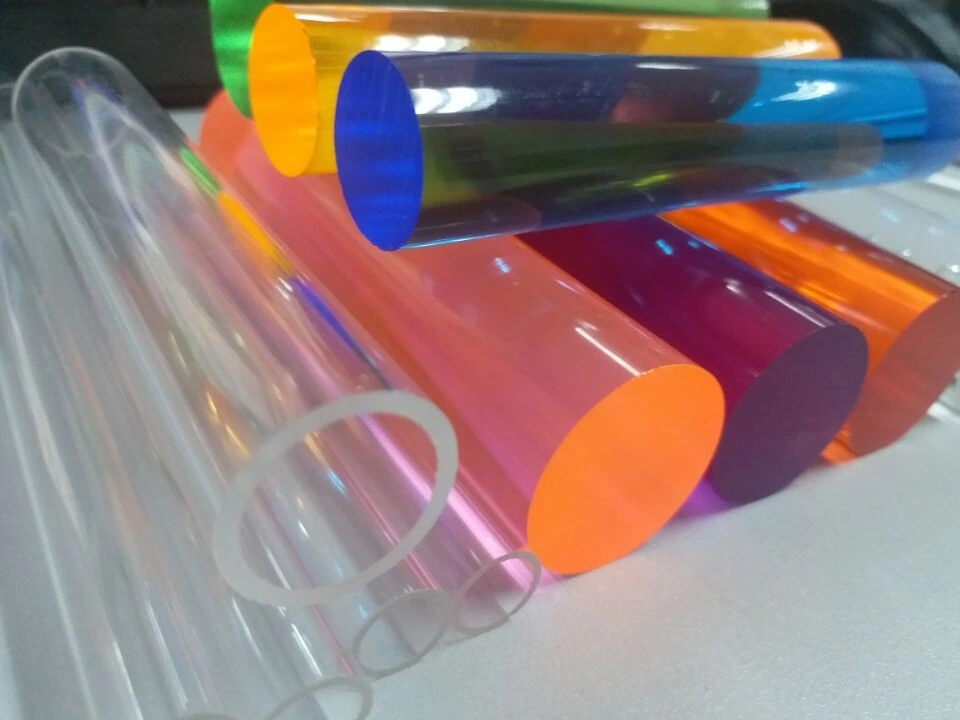When working on structural designs—whether in architecture, display engineering, or industrial applications—choosing the right material can make or break your project. Two of the most common materials for rod-based constructions are acrylic and glass. Both are known for their clarity, strength, and versatility, but they differ in significant ways that can impact durability, safety, and cost. This article breaks down their features so you can make a confident decision for your next project.
The Growing Importance of Material Selection
In today’s fast-paced design and construction environment, materials are chosen not only for their looks but also for their performance. While glass has long been admired for its elegance and tradition, acrylic has risen as a modern alternative due to its balance of strength and workability. When planning projects that involve Acrylic Tube/Rod or its glass counterpart, it’s important to weigh the unique characteristics of each option.

Strength and Durability
Acrylic’s Performance
Acrylic is known for being lightweight yet strong. It offers up to 10 times the impact resistance of glass, making it ideal in applications where safety is a concern. If dropped or struck, acrylic rods are far less likely to shatter into dangerous shards. This makes them a favorite for public installations, furniture components, and display cases.
Glass Under Pressure
Glass, while beautiful, is more brittle. It can withstand compressive forces well but is prone to cracking when subjected to sudden impacts or bending stress. However, tempered or laminated glass can provide enhanced strength, although at a higher cost. For projects that prioritize a premium aesthetic and can control environmental risks, glass remains a solid choice.
Weight and Workability
The Advantage of Acrylic
One of acrylic’s biggest advantages is its lightweight nature. Acrylic rods are about half the weight of glass, making them easier to transport, cut, and install. This reduces labor costs and allows for more creative structural designs without adding unnecessary load to the framework.
Handling Glass Materials
Glass is significantly heavier, which can complicate handling. Installation may require more specialized equipment and safety protocols. While its heft can convey a sense of luxury and permanence, it also limits flexibility in certain structural projects where lightness is critical.
Clarity and Aesthetic Appeal
Acrylic’s Visual Qualities
Acrylic provides excellent optical clarity and can transmit more light than glass in some cases. It also resists yellowing over time, particularly when treated with UV stabilizers. Designers often choose acrylic rods for applications like museum displays, retail fixtures, and artistic installations because of this long-lasting clarity.
The Classic Look of Glass
Glass has a timeless, crystalline appearance that acrylic imitates but doesn’t entirely replicate. Its natural luster and tactile feel often make it the preferred option for high-end projects. However, glass is less forgiving when it comes to scratches, while acrylic can be buffed and polished to restore its clarity.
Safety Considerations
Safety is a critical factor in structural design. Acrylic, when broken, cracks into larger, dull-edged pieces that pose less risk of injury. Glass, on the other hand, can shatter into sharp fragments unless it has been specially treated. For schools, hospitals, and public environments, acrylic rods are often the safer choice.
Cost Comparison
Cost plays a central role in project planning. Acrylic rods are typically more affordable than glass, both in material cost and installation expenses. Their ease of handling reduces labor charges, and the lower risk of breakage minimizes replacement needs. Glass, although more expensive, may justify its price in projects where prestige and luxury aesthetics are key selling points.
Environmental Resistance
Acrylic Outdoors
Acrylic stands up well against weathering, especially with UV-resistant grades. This makes it a suitable material for outdoor structures, signage, and protective barriers. Its resistance to corrosion and moisture further extends its lifespan in challenging environments.
Glass in Harsh Conditions
Glass also performs well outdoors but is more vulnerable to impact damage in exposed environments. While it doesn’t yellow like untreated acrylic, its breakability can pose challenges in areas prone to vandalism, storms, or heavy use.
Also Read : 10 نصائح لشحن السيارات من أمريكا إلى دبي بسلاسة
When to Choose Acrylic vs. Glass
When deciding between these two materials, consider the purpose of your project:
-
Choose Acrylic if your design requires lightweight handling, impact resistance, and versatile installation options. It’s also the better choice for family-friendly or high-traffic environments.
-
Choose Glass if the project prioritizes a luxurious, timeless look and durability under compressive loads, particularly in environments where impact risks are minimal.
In specialized projects, blending the two materials can even yield creative and functional results. For example, Acrylic Tube/Rod can be used in areas requiring safety and flexibility, while glass can highlight premium focal points.
Conclusion
Both acrylic and glass offer unique advantages in structural projects. Acrylic stands out for its safety, affordability, and lightweight strength, making it a practical solution for many modern applications. Glass, on the other hand, shines in settings where elegance and tradition are paramount. By understanding their respective qualities and matching them to your project’s priorities, you can ensure both functional success and visual impact. Ultimately, the right rod choice depends on striking the perfect balance between design vision, budget, and performance needs.



